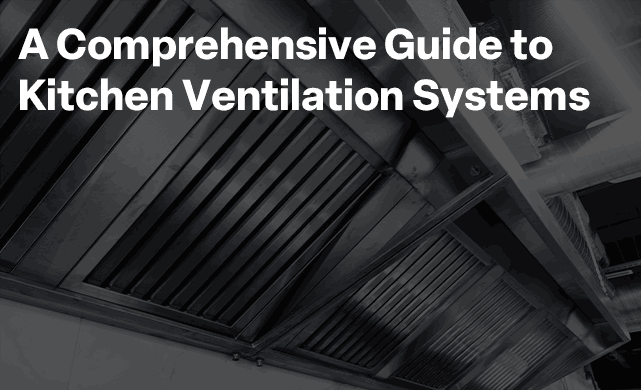Institutional kitchens, found in schools, hospitals, correctional facilities, and other large-scale settings, have the monumental task of preparing meals for a significant number of individuals. With this scale of operation, effective kitchen ventilation becomes even more crucial. In this guide, we will delve into the world of ventilation systems tailored for institutional kitchens, exploring various types, their significance, installation considerations, and maintenance practices.
The Importance of Proper Ventilation in Institutional Kitchens
1. The sheer quantity of cooking generates substantial smoke, grease, and odors. Effective ventilation safeguards indoor air quality and the well-being of kitchen staff and patrons.
2. Institutional kitchens handle large quantities of flammable materials. Proper ventilation helps prevent the buildup of combustible substances and reduces the risk of fires.
3. Institutional kitchens are subject to health and safety regulations. Adequate ventilation is often a mandatory requirement to maintain compliance.
4. A well-ventilated kitchen minimizes heat buildup, creating a more comfortable and productive environment for kitchen staff.
Types of Ventilation Systems for Institutional Kitchens
1. Exhaust Hoods: These hoods are a staple in large kitchens. They come in wall-mounted, island, and canopy styles and are designed to capture and remove cooking fumes and heat.
2. Make-Up Air Systems: These systems provide a controlled influx of fresh outdoor air to replace the air being exhausted by the hoods. This ensures proper air balance and prevents negative pressure.
3. UV-C Ventilation Systems: Ultraviolet-C (UV-C) technology can be integrated into ventilation systems to sterilize and neutralize airborne pathogens, enhancing kitchen hygiene.
4. Demand-Controlled Ventilation: These systems automatically adjust exhaust and supply air based on cooking activity, optimizing energy efficiency and air quality.
Key Considerations When Choosing a System
1. Consider the volume of cooking done daily to determine the appropriate capacity for the ventilation system.
2. The kitchen layout, including the placement of cooking equipment, will influence the type and placement of ventilation components.
3. Be aware of local building and health codes that may specify ventilation requirements for institutional kitchens.
4. Opt for energy-efficient systems to reduce operational costs over the long term.
5. Consider the noise generated by the ventilation system, especially in settings where noise can disrupt operations.
Installation and Maintenance Best Practices
1. Enlist the services of professionals experienced in institutional kitchen ventilation to ensure compliance and optimal performance.
2. Establish a rigorous cleaning schedule for hoods, filters, and ductwork to prevent grease buildup and maintain airflow.
3. Conduct routine inspections to identify potential fire hazards, blockages, or system malfunctions.
4. Ensure that ductwork is properly sealed and free from blockages, preventing air leakage and maximizing efficiency.
5. Train kitchen staff on the proper use of the ventilation system to optimize its benefits and prevent misuse.
Institutional kitchens are the engines that fuel large-scale dining operations, and ensuring their efficient and safe functioning is crucial. Adequate ventilation not only safeguards air quality and hygiene but also contributes to compliance with regulations and fire safety protocols. By understanding the unique demands of institutional kitchens, carefully selecting the appropriate ventilation system, and implementing regular maintenance practices, you can create a kitchen environment that supports the culinary excellence and well-being of all stakeholders involved.


















